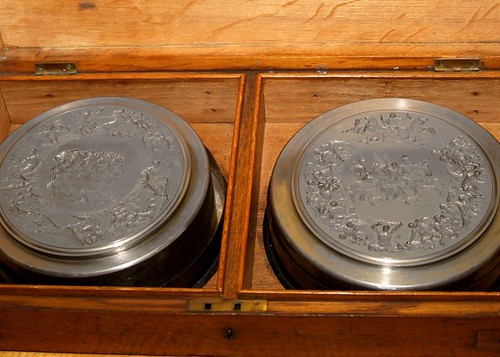
PREV ARTICLE
FULL ISSUE
PREV FULL ISSUE
FEATURED WEB PAGE: THE WATERLOO MEDAL DIESThis week's Featured Web Page pictures the dies for the Pistrucci Waterloo Medal.Medallists were called on to submit their designs for Wellington’s gold medal idea. In 1819, Benedetto Pistrucci, Chief Medallist at the Royal Mint, had his design accepted. Pistrucci was a controversial figure, an Italian who had worked in France under Napoleon. He had a fiery temperament and an artistic contempt for working with others. He refused to copy the work of respected British sculptor John Flaxman, planning to create and carve his own designs. Pistrucci’s plans featured busts of the Allied monarchs of Britain, Austria, Russia and Prussia, with elaborate classical designs. For this he was to be paid the then-immense sum of £3,500. Pistrucci had a heavy workload designing coins for the Royal Mint and work on the Waterloo medal was slow. Pistrucci also feared he would be sacked as soon as the medal was finished, so may have deliberately delayed. The carving of the medal dies took an astonishing 30 years. By 1849, the dies were reportedly finished, but only in terms of design. They now needed to be hardened so that they could be used to strike the medals. This had never been done with such a large and complex design. Although the dies were created in four pieces to assist in their hardening, it seems that nobody was willing to take the risk of damaging Pistrucci’s work that had taken three decades in the making. Eventually, the Royal Mint used electrotyping, a recently invented chemical process, to cast some medals in silver. Unfortunately, by this time all the monarchs depicted on the medal had died, as had almost all the intended recipients, except for the Duke of Wellington.  http://waterloo200.org/200-object/
|
